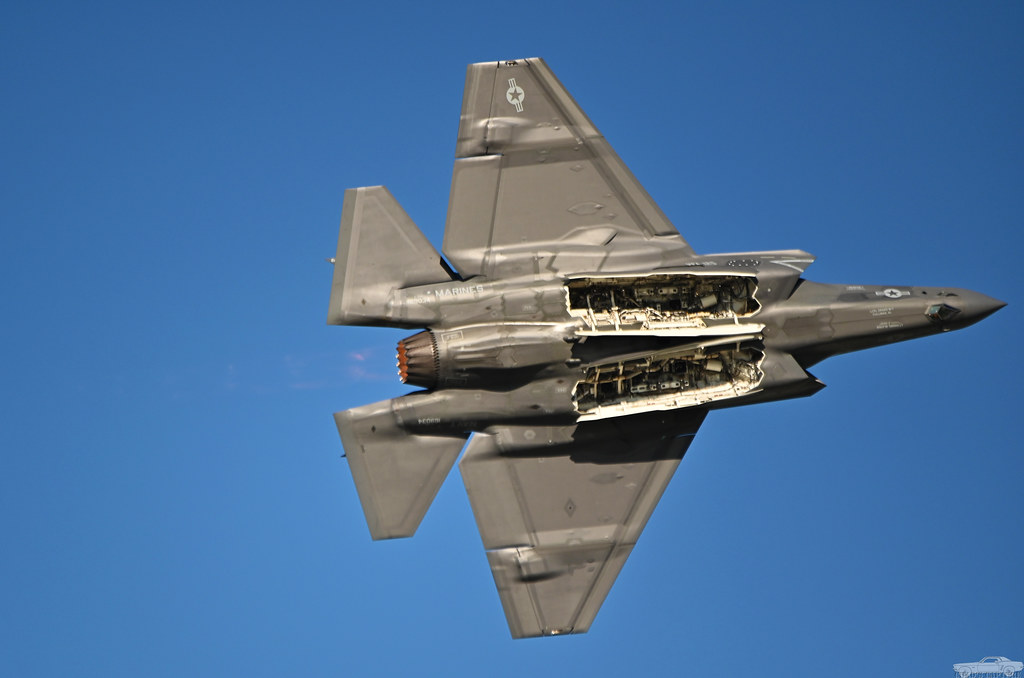
At the peak of military aviation technology is the F-35 Lightning II, Lockheed Martin’s cutting-edge stealth fighter jet.

Designed to equip the U.S. and allied forces with air superiority, the F-35 is not just an improvement for old fleets; it signifies a notable progression in aerial combat capability.

The F-35 initiative, involving more than 1,900 suppliers across 48 states and ten nations, showcases America’s commitment to maintaining air superiority in an ever-evolving threat landscape.

As defense planners look to the future, the triad of F-35 variants—each tailored to the specific needs of the branch it serves—offers a versatile and formidable solution to modern warfare challenges.

The F-35A, designed for the U.S. Air Force, the F-35B for the Marine Corps, and the F-35C for the Navy, share a foundational design yet diverge to excel in their environments.

The conventional takeoff and landing capabilities of the F-35A complement the unique short takeoff/vertical landing ability of the F-35B and the enhanced carrier capabilities of the F-35C.

These modifications have resulted in remarkable stats—a 13% increase in length, 16% wingspan expansion, and a 30% increase in weight compared to their original designs.

It is no wonder that other nations, such as Singapore, have opted to integrate the F-35 into their air forces, acknowledging the jet’s advanced capabilities and the strategic value it brings.

Singapore’s recent decision to bolster its air defense with a procurement of eight F-35A jets, on top of the F-35B jets already on order, is a testament to the jet’s superiority.

As outlined in an announcement during the Ministry of Defence’s budget debate, the F-35As will be delivered around 2030, furthering the Republic of Singapore Air Force’s standing in what Defence Minister Ng Eng Hen described as the “premier league.”

The F-35 Lightning II’s excellence is not just in its sheer power—a Pratt & Whitney turbofan engine that can produce 40,000 pounds of thrust—but also in its stealth technology and unparalleled awareness of the surroundings.

The integration of its sophisticated sensor package, such as the AESA radar, DAS, EOTS, and electronic warfare abilities, offers pilots a comprehensive battlefield perspective, a feature that Maj. Justin “Hasard” Lee, an Air Force F-35 pilot instructor, asserts as providing an unparalleled edge in combat.

The F-35’s capacity to function effortlessly in a network of land, sea, and air resources enhances its effectiveness. Its stealth capabilities allow it to enter hostile airspaces without detection, carrying a payload of up to 18,000 pounds of precise ordnance. This versatile fighter’s stealth profile is improved by radar-absorbent coatings and design elements that reduce its visibility to enemy radar and surveillance systems.

The Department of Defense’s F-35 Joint Program Office is continuously enhancing the aircraft’s performance and capabilities, guaranteeing that the Lightning II stays the most lethal and versatile fighter jet globally.

Boasting unparalleled stealth, agility, and firepower, the F-35 is ready to assert its dominance in the skies, ensuring its operators uphold air superiority for years to come.
Relevant articles:
– How are F-35As different from F-35Bs, and what will the new fighters add to Singapore’s defence capabilities?, channelnewsasia.com
– 1,000 Examples Now Built: A Guide To The Variants Of The F-35 Lightning II, Simple Flying, Jan 25, 2024
– F-35 Lightning II: Everything to Know about Lockheed’s Stealth Fighter Jet, ExecutiveGov, Dec 1, 2023

